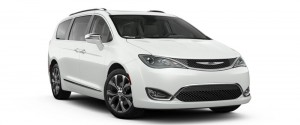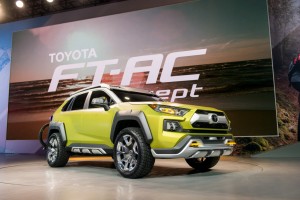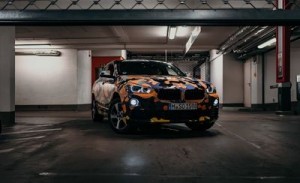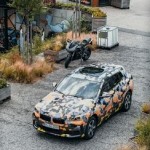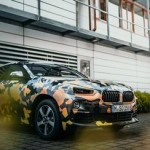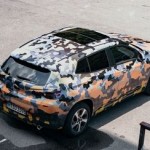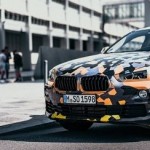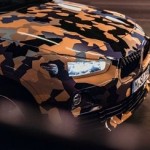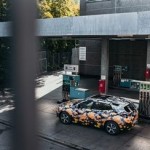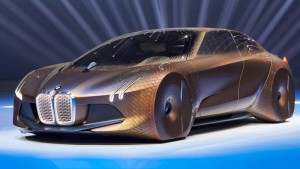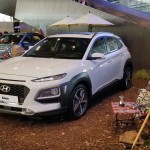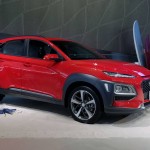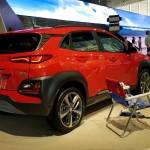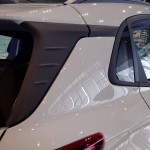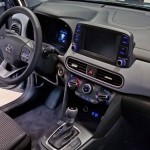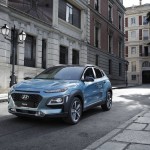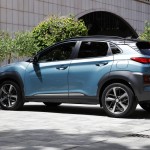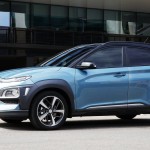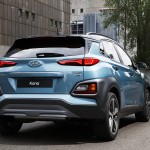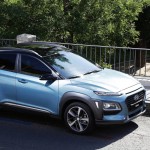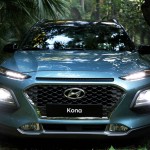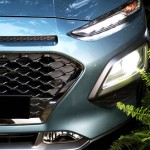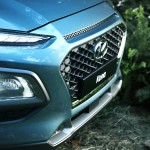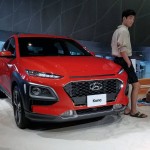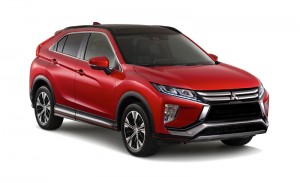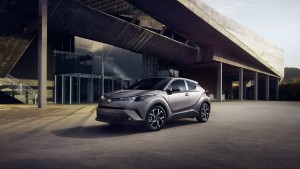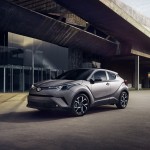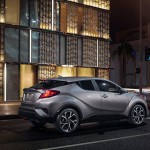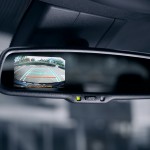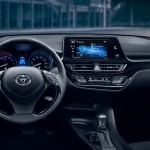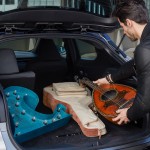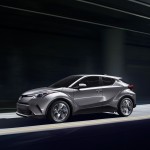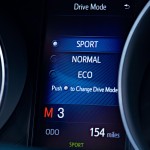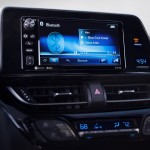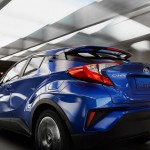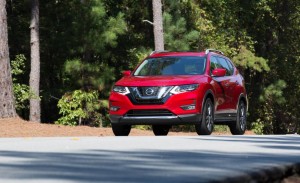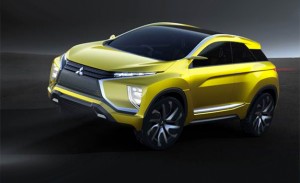Tag Archives: crossover
Chrysler Has A New Pacifica-Based Crossover SUV Coming
It looks like Chrysler is adding up to its lineup with a crossover SUV based on the Pacifica minivan. That is quite ironic since the brand repurposed the old Chrysler Pacifica crossover’s name for a minivan and then later on, that very same van yielded another crossover.
The information that FCA CEO Sergio Marchionne revealed in his interview with MotorTrend is an exciting development from Chryler. That’s because nothing much is going on with the brand in the past months, except for the departure of the 200.
With only the 300 and the Pacifica currently in its lineup, Chrysler is looking to market its brand to another market—specifically, people who doesn’t want either a large sedan or a minivan. Both these segments are giving up their share of the market for the crossover, which will have three rows and will reportedly in 18 months.
This is the right step for Chrysler since companies like Subaru and Volkswagen have also expanded their market to that of the crossover segment. The decision, of course, to use a Pacifica-based crossover will be beneficial to the crossover’s market. After all, a Pacifica platform offers more advantages than spewing just another model.
There are some “unique opportunities” in store for the new crossover since it will be using the Pacifica platform. Finally, we could have a crossover that has a spacious cargo and passenger space. There is also the possibility of adapting the PHEV powertrain to the new crossover.
Plug-in crossovers haven’t been tried by “ordinary” brands, except for Mitsubishi, though the Japanese automaker only tried the plug-in variant with its luxurious Outlander PHEV. That being said, the Chrysler has a chance to offer a larger PHEV than the Outlander.
3 Things Got Us Hyped About the Toyota Subcompact Urban Crossover
We’ve heard it again and again: Toyota, the Japanese carmaker, is planning on adding a small urban crossover SUV to its line. At the 2017 Los Angeles Auto Show, we saw the third preview of the vehicle in the form of the FT-AC Concept.
There is no coincidence in this after the Japanese automaker confirmed that it will bring something new to the market in the next years. Toyota Motor North America General Manager Jack Hollis said that the Japanese carmaker plans to have more than one vehicle in each segment, especially if they differ enough in features.
1. Subcompact Lineup Teases With Third Preview Of New Concept
The FT-AC Concept is the third time Toyota teased us with the concept for a new subcompact urban crossover. Currently, the Japanese automaker has a slew of subcompacts such as the C-HR, the compact RAV4, the midsize 4Runner, the full-size Highlander and Sequioa, and of course, the Land Cruiser. All of these are worlds apart in features, performance, and driving experience. The Land Cruiser remains at the top of the range.
2. Toyota Is Testing The Water With New Concepts
The FT-AC Concept may be the third one we have seen, but the earlier two concepts can hold a candle on their own. The FT-4X Concept and the TJ Cruiser Concept, as well as the third concept, the FT-AC, all have distinct characters and attitudes. Hollis said that this was specifically done to “test the waters in the market” and see the feedback from Toyota’s loyal followers.
3. New Concepts Will Have A New Platform
Many of the features of the three new concepts are different, but they will most probably share the same platform—the TNGA platform. This means that the new urban subcompact crossover will be a unibody vehicle instead of a hardcore body-on-frame vehicle. The size would be similar to the C-HR and powered by an inline-4. It will have a front-wheel-drive system, but it will also offer an option for an all-wheel drive.
BMW X2 Crossover Spy Photos Released
Apparently, BMW is not yet done with crossovers. We have seen what they did with the X4, the X6, the X3, the X5, and even the X1. While some of us loved the lineup of crossovers from the German automaker, others felt that the brand was trying too hard to compete with US and Japanese manufacturers.
Then, came the BMW X2 crossover. BMW released spy photos of the X2 Crossover in camouflage. Remember this was previewed as a concept during last year’s Paris Auto Show? Back then, there was no excitement surrounding its design, which was actually seen as the more stylish version of the X1.
The BMW X2 was made essentially to provide the same functionality as the X4 and the X6, though the latest BMW crossover exchanged the X4’s and X6’s fastback shape for a more traditional roofline. This significantly ups the X2’s design and style. It also has a lower height and higher window line, allowing the X2 to have a more proportioned and sportier body style than the X1.
To prove its more aggressive aesthetic, the X2 will also have an angry-looking pair of headlights and BMW’s ever-popular kidney grille.
Similar to the X1, the X2 will also use BMW’s front-wheel-drive-based UKL platform. Majority of BMW’s global market will get a front-wheel-drive X2, but the United States may actually expect an all-wheel-drive for its market.
As for the power, BMW will be using a B46 turbocharged 2.0-liter inline-four engine with an output from X1’s 228 horsepower. If you are looking for more power, the X2 might also offer an M Performance variant, which will add power, torque, and even better handling and driving experience.
We don’t have any details yet on when BMW plans to unveil the X2, but you might be able to see it before the year ends. Maybe the Frankfurt auto show in September is a good event to launch it? Sales and distribution should begin by 2018.
BMW Electric Crossover To Feature Level 3 Autonomy
We don’t know what BMW’s upcoming electric crossover will be called, but what we do know is that it will arrive with a level 3 autonomy. So, whether or not it’s called the i5, iNext, or something else, the BMW electric crossover has the ability to bring the level 3 autonomy to fruition, which will revolutionize the auto industry.
The SAE International defines level 3 autonomy as “conditional automation.” Basically, it means the car can take over the whole driving mechanics and functions as long as the driver is in the car and ready to take command of the vehicle once required. Unlike level 1 or level 2 autonomy, the human driver can take his eyes off the road under level 3, as well as relax a bit because he doesn’t have to handle the steering wheel either.
The driver would be able to text, make a call, or even read a book under this level 3 autonomy. However, he will be alerted if he needs to intervene and take over the car. It will be the system’s responsibility to decide if it cannot function under the current conditions.
Kevin Marcotte, BMWi’s national manager in Canada, told InsideEVs that the German automaker’s use of level 3 autonomy in its electric crossover is the “next big thing for us in terms of leapfrogging the industry.” It will be a “major leap” for the autonomous driving technology.
For years, there have been rumors that the German automaker is working on a new electric vehicle—a crossover, some said. The reports about BMW’s use of level 3 autonomy means that any doubts can be put to rest. There is indeed an electric crossover from BMW and although we aren’t sure yet what it’s going to be called, we have a little tidbit in the form of level 3 autonomy.
BMW recently announced its shift to electronic vehicles, including that it’s calling the iNext that will introduce a number of new technologies. Apparently, that will be released in 2021 while the i8 roadster will debut next year. A Mini BEV is reportedly going to be launched in 2019 and the all-electric XBMW X3 will be unveiled in 2020.
3 Possible Things That Could Happen To The Alpine Crossover
The new Alpine A110 is not for everyone’s taste. It’s a bit too cramped and of course, doesn’t address the crossover segment that seems to be missing in Renault’s lineup. Now, the French automaker’s performance sub-brand is working on an Alpine crossover that will battle the Porsche Macan out of its lofty porch (or so Alpine aims).
According to a source, the new Alpine crossover will most likely arrive in 2019 to up Renault’s sales and revitalize this segment that the French car manufacturer hasn’t dominated just yet. Since Renault has little experience in the production of SUVs and crossover, they will most likely turn to Mercedes and Nissan for the new Alpine SUV’s platform.
1. Powertrain From Standard Renault
Incidentally, Renault has a technical alliance both with the German and Japanese car manufacturers, so that should make it easy enough. Power will be coming from Renault’s 1.8-liter turbocharged four-cylinder engine, which is capable to push out 300 horses. There could also be a hybridized variant of the Alpine SUV, but there’s no word yet on whether this is in the works already.
2. Styling From Alpine A110
The styling of the incoming Alpine SUV should be based on the Alpine A110 sports car, including the front fascia. Inside, the SUV won’t be as spartan as the coupe, of course, providing maximum comfort and luxury to the owners. It will, however, have an aggressive seat and sporty steering wheel. All over the interior, you’ll find leather, aluminum, and carbon fiber.
3. Not Available in the US
Unfortunately, if you want to own this “replacement” for the Macan, you’d have to be somewhere in Europe, the UK, or Japan because it won’t be brought to the United States. Renault has no plans of bringing the Alpine brand to the US, much to everyone’s chagrin.
Hyundai Kona Is Going Tiny With Its New Crossover
Hyundai just announced that its new mini crossover called the Kona is going to be on sale early next year in the United States. That means that the South Korean automaker is finally ready to make a splash in the car industry’s hottest segments.
And that’s not all. According to a source, the Hyundai Kona subcompact crossover will also usher in a new phase for the brand as it features for the first time the automaker’s new design language. That’s a surprising move for the company, which is suffering from a sales slump in the US and is now pressured to do good in the crossovers segment.
The styling originated from Irvine, California, Hyundai’s design studio. It features narrow LED daytime running lights mounted high near the hood line. There are also separate headlights that are positioned lower down the fascia. The effect? The Kona, up front, looks like the Nissan Juke or Jeep Cherokee.
The look isn’t something everyone will love or adore, but the Nissan Juke was surprisingly successful in its sales both in Europe and even in the United States. The Cherokee, on the other hand, sold 200,000 units a year in the US in the last three years. These statistics means well for the Kona and any subsequent Hyundai badges.
Hyundai’s new looks for the crossover will be used on the 2018 and 2019 model of the Santa Fe Sport, which spy shots showed a headlight setup and honeycomb grille similar to the Kona. The new crossover language design, however, signals Hyundai’s willingness to finally break away from a decade of having strong design connection among its crossovers. Now, each nameplate will have a distinct design.
The similar look was necessary because Hyundai wasn’t such a known brand 10 years ago. But now that it has differentiated itself from the rest of the Asian automakers, it’s time to give each vehicle in the lineup a fresh look.
3 Key Features of the 2018 Mitsubishi Eclipse Cross
For an estimated starting price of $21,000, is the 2018 Mitsubishi Eclipse Cross worth every penny?
1. Design
Just when we thought that the Eclipse moniker is already dead after its production ended in 2011, Mitsubishi just revived the name for its new crossover utility vehicle (CUV). According to CarAndDriver, the company’s reason for carrying the name for their new product is its sloping roofline that is one of the key distinguishing features of the Eclipse coupe.
The Eclipse Cross sits between the Outlander Sport and the Outlander models in the hierarchy of Mitsubishi vehicles. The Eclipse Cross shares the same wheelbase measurement with the mentioned models at 105.1 inches.
The reviewer complained that the Eclipse Cross adopted too many styling factors from the Outlander and the Outlander Sport. The CUV only had a few design elements that set it apart from the two. In addition, the front grille of the auto bears a striking resemblance with the shape of the Lexus NX’s radiator grille.
2. Engine
The Eclipse Cross carries a 1.5-liter inline-four engine. The European model of the unit churns 161 hp at 5,500 rpm and 184 lb-ft of torque at 1,800 rpm. The company hadn’t released information yet about the configuration of the model bound to the U.S. but expect it to possess a boost in power.
The speed of the Mitsubishi CUV is delivered by a six-speed manual gearbox to the front wheels. The one in the U.S. market will likely come with a continuously variable transmission (CVT) and an all-wheel version of the auto is also possible.
3. Interior
The cockpit of the Eclipse Cross is a notch up compared to the Outlander. Then again, it was criticized for its heavy use of hard plastic and poor visibility of some of its controls. Despite that, the improved 7.0-inch touchscreen, head-up display, 360-degree camera, touchpad controller and adaptive cruise control make up for the issues.
The infotainment system of the CUV can be integrated with Android Auto and Apple CarPlay. However, it lacks a native navigation system.
Should You Buy the 2018 Toyota C-HR?
There is a lot of hype surrounding the 2018 Toyota C-HR. The crossover is being marketed for its striking style, decent performance and low payment options.
So is the car worth its advertised $22,500 starting price?
Design
The C-HR is both futuristic and sporty-looking. The hood, headlamps, radiator grille and front bumper resemble the ones carried by the RAV4. However, the C-HR is more compact in appearance due to its chopped off roof and it has a smoother body compared to its SUV counterpart. The rear of the crossover is pretty sleek with its extended roof spoiler and bootlid spoiler. The rear passenger door of the vehicle is unique too.
Despite the smaller design compared to the RAV4, the C-HR can comfortably fit four adult passengers. There is also plenty of headroom for the occupants of the vehicle.
Engine
The C-HR is equipped with a 2.0-liter inline-four engine. The output of the unit is 144 hp and 139 lb-ft of torque. The power of the car goes to the front wheels and it is distributed via a continuously variable transmission that allows it to have enough acceleration during climbs, predictable responses, mild noise and modest level of vibrations.
The crossover has fuel economy rate of 44.8-74.3 mpg. The CO2 emissions of the vehicle are rated at 134-87 g/km.
Tech
Among the notable technologies found in the auto are the standard active-safety systems providing the vehicle’s adaptive cruise, lane-keep assist, automatic high beams and pre-collision braking. The said elements are usually provided by other competitors as optional features.
Recommendation
Overall, the Toyota C-HR may be along the average grade when compared to its rivals. Motor1.com recommended that potential buyers of the crossover should shop around for better alternatives first before settling down for it.
Toyota C-HR Pictures
Check out the photos of the Toyota C-HR in the gallery below:
3 Things To Know About The 2017 Nissan Rogue Hybrid
The 2017 Nissan Rogue Hybrid is finally going to compete against the Toyota RAV4, though we are not sure how this will fare because RAV4 has been alone in the crossover hybrid segment for quite some time now.
Given that the Rogue Hybrid will be around $1,440 less than the RAV4, we’re pretty sure there is a market for this crossover. Not only that, the Rogue also received a mildly better EPA ratings, so environmentalists will surely take notice.
Here are the top 3 features of the hybrid crossover based on a report:
1. Prices
The base model will start at $27,180 for a front-drive SV model and $32,100 for a front-drive SL model. This is around $1,000 to $1,200 more than the prices of the non-hybrid Rogue. To really compete with the Toyota RAV4 (which only comes in AWD), however, you need to add $1,350 on the Nissan’s base price.
This will reflect the fee Nissan charges for an all-wheel drive system. With this additional fee, the Rogue Hybrid SV AWD will come at $28,530, which is $1,440 cheaper than the RAV4 XLE Hybrid. The Rogue SL, on the other hand, costs $33,450 with AWD. This is the model aimed between the hybrid’s SE ($33,125) and Limited ($34,970) trim models.
2. Equipment
Standard to the Rogue SV are automatic climate control, heated front seats, remote start, and blind-spot warning. If you want the Premium package, you will need to add $2,870. That gives you access to navigation, a Bose audio system, a panoramic sunroof, a heated steering wheel, and a power liftgate.
The SIL comes with all those as standard, except for the sunroof. It adds, however, these: leather seats, LED headlights, and 18-inch wheels. If you want the panoramic sunroof and automated emergency braking, you’ll have to add $1,520.
3. Efficiency
The Rogue Hybrid received a rating of 34 mpg combined for front-drive models and 33 mpg combined for all-wheel drive. That’s about 2 mpg more than RAV4’s 32 mpg in fuel economy.
Under the hood, the Rogue is fitted with 2.0-liter four-cylinder paired to a 40-hp electric motor for a total of 176 horsepower.
3 Things You Need To Know About The Upcoming Mitsubishi Crossover
The US market is in need for a new car from Mitsubishi. Lucky for them, they can expect one during the Geneva Auto Show in March. The concept has been released, and it looks like it will fit the bill between the Outlander Sport and the Outlander.
The company’s last big auto-show production car was the Mirage hatchback back in 2013. But in just a few short months, the all-new vehicle is going to arrive in America and true enough, it’s going to be another Mitsubishi crossover.
Where It Will Fit In
The gap between the Outlander Sport and the Outlander is quite small to accommodate another model based on a report, so we’re a little bit curious as to how small or big the new crossover needs to be. The Outlander Sport is a five-seater and slightly larger than the “kings” of crossovers such as the Honda HR-V. The Outlander, on the other hand, is a seven-seater that is a bit bigger than other compact like the Honda CR-V.
This only means that Mitsubishi is looking at growing the Outlander and making the Outlander Sport smaller by 2018, when the two will get refreshed for that model year. It’s still unclear if the resize of the Outlander Sport and the Outlander will happen during the refresh or when it get fully redesigned later on,
What The Engine Is Going To Be Like
The engineers over at Mitsubishi have full control of the design and power of the crossover. Nissan, its new owner, did not intercede in this one. According to reports, the new crossover will use a turbocharged four-cylinder engine that will have more power than the current 2.4-liter four-cylinder that comes as standard on the Outlander and optional on the Outlander Sport.
The engine will give off around 166 to 168 horsepower and about 162 to 167 pound-feet of torque.
How Will It Look Like
The crossover will have Mitsubishi’s famed “diamond shield” grille design, and it might look a bit like the eX concept that was shown in 2016.

